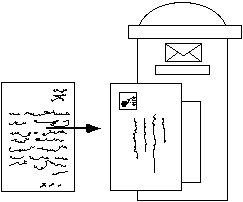Although significant gains in storage, transmission, and processor technology have been achieved in recent years, it is primarily the reduction of the amount of data that needs to be stored, transmitted, and processed that has made widespread use of digital video a possibility. This reduction of bandwidth has been made possible by advances in compression technology. Advances in compression techology more than anything else have led to the arrival of video to the desktop and hundreds of channles to the home.
Compression reduces the bandwidth required to transmit and store digital video.
So what is compression, and how does it work?
© Colin E. Manning 1996

